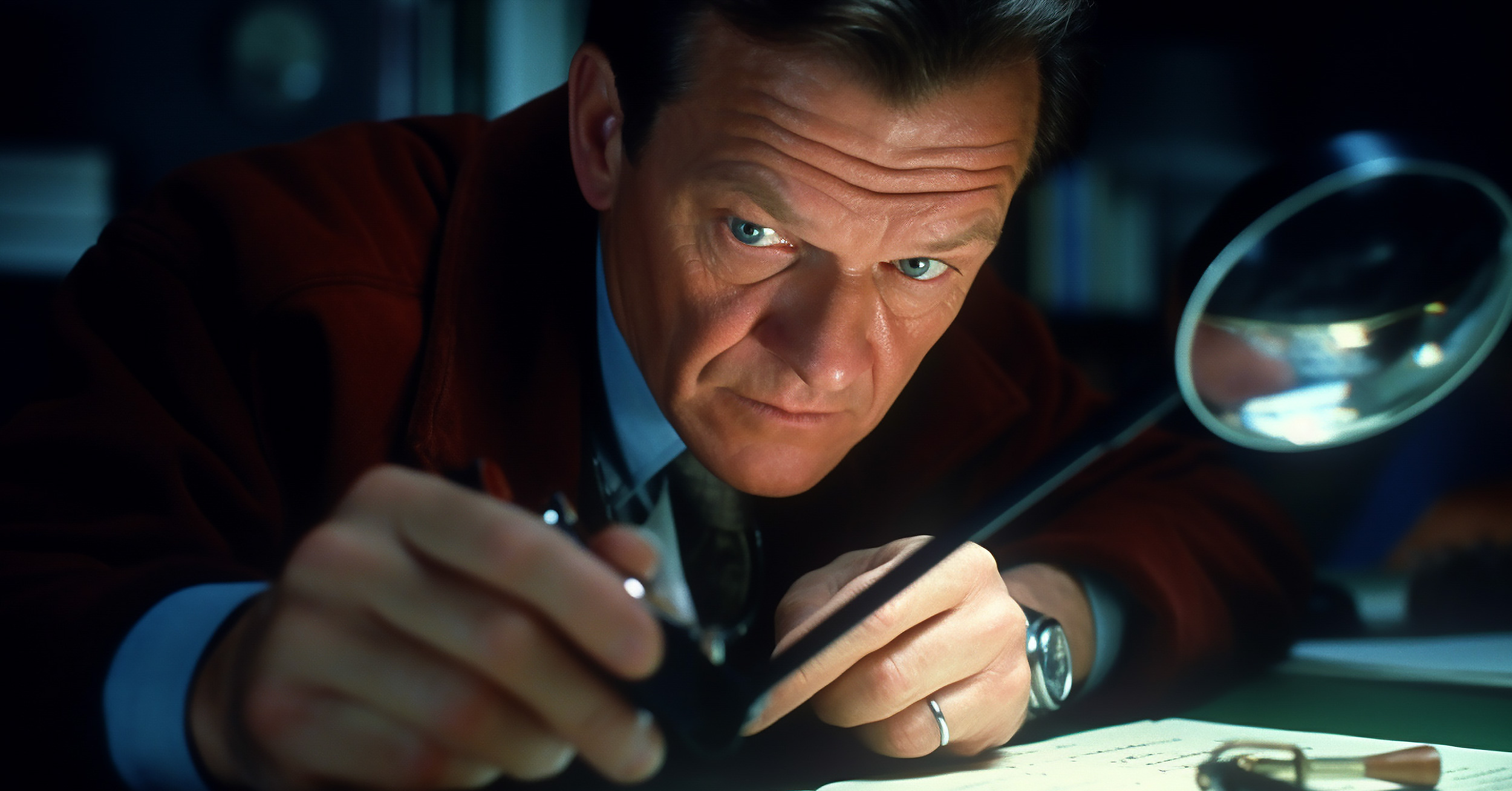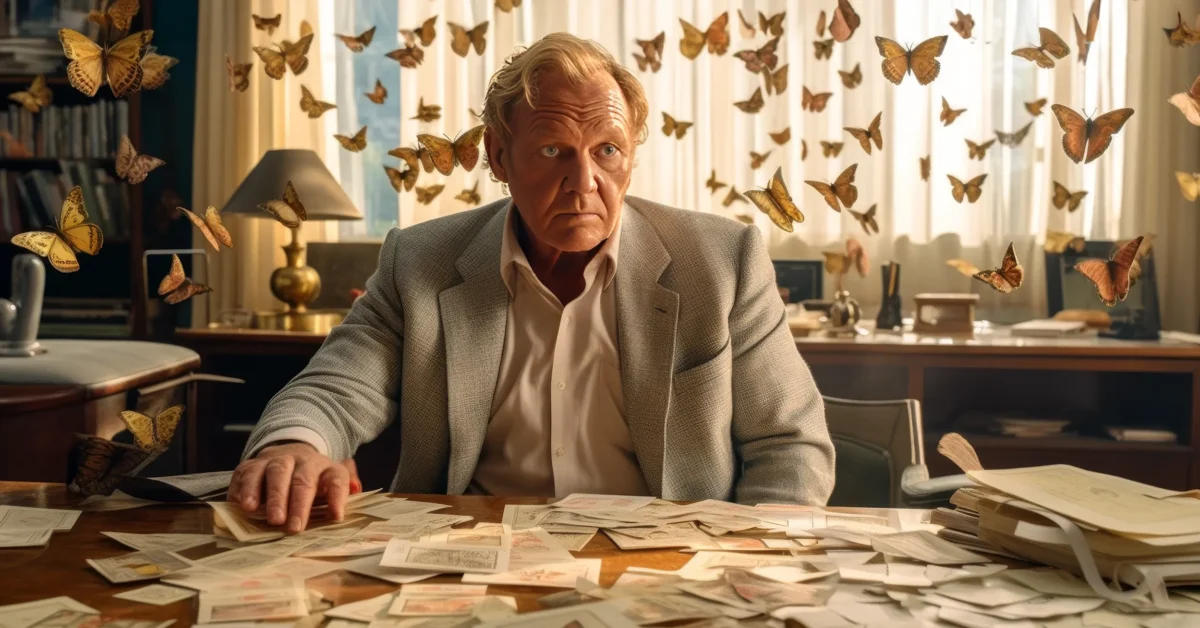
Surviving Murphy’s Law: A New Approach to Saving Money

Chaos Capitalism and the Future of Business in a Volatile World
Experience the investment world beyond spreadsheets, where risk and reward merge with stories, intuition, and innovation.
“In the business world, the rearview mirror is always clearer than the windshield.”
Introduction
Imagine, for a moment, navigating the intricate maze of human relationships by simply referring to a spreadsheet. Consider choosing a life partner based only on their height and weight. It’s akin to cherry-picking a house solely based on square footage, ignoring its history, the laughter echoing within its walls, or the security it offers against a storm. Similarly, in the world of investments, the allure of numbers — P/E ratios, balance sheets, and annual growth rates — often overshadows the qualitative essence. These quantitative metrics, although important, only scratch the surface.
Just as true love isn’t determined by superficial metrics, the real worth of an investment goes beyond mere dollars and cents. It’s a symphony of stories, risks, visions, and values. Dive into this narrative, and you’ll see it’s time to dig deeper, to understand the soul of an investment, not just its face value.
The Changing Landscape of Risk and Reward
Delve into the annals of investment history, and you’ll find a tangible-centric world. Assets like real estate, gold, and machinery dominated portfolios. Yet, fast forward to today, and the landscape mirrors the evolution of music. Just as we transitioned from tangible vinyl records to streaming intangibles like songs, playlists, and podcasts, the world of investments has undergone a transformation. We’ve journeyed from palpable assets to a new epoch where brand names, intellectual properties, and digital innovations hold center stage.
Take the colossal rise of Apple, for instance. While they do have physical products, it’s not just the iPhones and MacBooks that have propelled them to trillion-dollar valuations. It’s the intangible brand loyalty, the intellectual property of their iOS ecosystem, and the perceived value of their design that’s truly at play. When someone buys an iPhone, they’re not just purchasing a phone; they’re buying into an idea, a lifestyle, and a promise of innovation.
However, here’s a contrarian fact to chew on: even as intangible assets soar in importance, they’re notoriously hard to value. Unlike traditional assets, whose values can be determined by market prices or replacement costs, how does one quantify the worth of a brand’s reputation or the potential of a novel digital algorithm?
To underscore this challenge, recall the fate of BlackBerry. At its zenith, BlackBerry wasn’t just a phone manufacturer; it represented trust, durability, and innovation. Yet, with rapid shifts in technology and competition, the once intangible powerhouse of brand loyalty quickly evaporated, causing its market position to tumble dramatically.
In light of such examples, relying solely on quantitative metrics to gauge the worth and potential of modern investments seems not just insufficient but perilous. The new investment terrain demands a holistic lens — one that harmoniously blends numbers with narratives.
Emotional Intelligence and Investing
Ever had that uncanny feeling where everything looks pristine, but that tiny voice says otherwise? That’s intuition, an intangible, yet indispensable component of emotional intelligence in the realm of investing.
Consider the case of Warren Buffett, arguably one of the most successful investors of our time. In the early 1990s, while most analysts were enamored by the potential of a certain tech company, Buffett passed on it. Why? He confessed that he didn’t understand its business model, but his reservations also stemmed from an unease about the over-enthusiasm of its management. As time revealed, the company experienced substantial financial turbulence, validating Buffett’s hesitation.
However, it’s essential to balance intuition with objective facts. For every anecdote that celebrates gut feelings, there are contrarian tales where intuition led investors astray. A pertinent example is the dot-com bubble of the late 1990s. Many investors, lured by the enchanting narratives spun by charismatic CEOs, poured money into startups with dubious business models and overblown valuations. Their gut feeling? “This is the future”. Sadly, when the bubble burst, countless investors suffered significant losses.
Then there’s the story of a seasoned investor who sensed a disconnect between a company’s glowing annual report and the CEO’s body language during an annual general meeting. While the numbers and projections looked flawless, the CEO’s subtle fidgeting and overly rehearsed optimism made the investor wary. And rightly so. A few months later, the company faced a scandal which drastically affected its stock prices.
While emotional intelligence can offer deep insights, it’s not infallible. It’s a tool, best used in tandem with rigorous research, objective analysis, and a healthy dose of skepticism.
The Role of Company Culture in Long-Term Value
A thriving workplace culture is reminiscent of fertile soil. It not only nurtures seeds to sprout but allows plants to grow, bear fruits, and foster a robust ecosystem. Within this environment, growth, innovation, and resilience are not just encouraged but are ingrained in the very fabric of the ecosystem. Companies with such cultures prioritize employee well-being, creativity, and teamwork. It’s no coincidence that companies that prioritize their people consistently rank as some of the best places to work and also stand as hallmarks of innovation and profitability.
Conversely, a toxic culture is like arid, infertile land. Plants struggle to take root and, those that do, tend to wither away. In the case of BlackBerry, once a market leader in smartphones, insiders reported an internal culture fraught with infighting, slow decision-making, and resistance to change. As competitors like Apple introduced innovative products, BlackBerry struggled to keep up. Their toxic culture didn’t just impact employee morale; it stifled innovation, causing the brand to lose its market dominance and customer loyalty.
In essence, while pressure-cooker environments might yield impressive financial results, they tend to be temporary. In the long run, a nurturing, positive workplace culture tends to foster sustainable growth, employee satisfaction, and continued innovation. As businesses and markets evolve, it’s these values and cultures that stand the test of time.
Ethical Investment Considerations
Today’s investors are cognizant of the broader impact of their decisions, proving themselves not just wallet-wise but also world-wise. They recognize that by investing in ethical businesses and fostering innovators who prioritize people, they’re building bridges to a more promising future.
Consider the case of Patagonia, the outdoor clothing brand. Unlike many of its competitors, Patagonia has embedded sustainability into its business model. Over the years, as consumers have become more environmentally conscious, Patagonia’s value proposition has resonated deeply, and its financial returns have been compelling. This is a testament to the fact that companies that prioritize ethical considerations can also be profitable.
However, while ethical and sustainable investing sounds utopian, it’s not without its gray areas. As the trend has grown, so too has “greenwashing” — a phenomenon where companies give a false impression of their true values. For instance, a few firms have faced scrutiny for proclaiming to be “eco-friendly” while having a carbon footprint that says otherwise or sourcing materials unethically. It underscores the necessity for investors to be discerning, conducting rigorous due diligence before committing capital.
As the line between genuine impact and savvy marketing blurs, the burden is on investors to look beyond the surface and recognize true value.
The Consumer Perspective: Brand Reputation & Loyalty
Remember United Airlines in 2017? When a video of a passenger being forcibly dragged off an overbooked flight went viral, the outrage was instantaneous. Within days, United’s market value plunged by $1 billion. In the digital age, where consumers voice opinions loudly, brand reputation can indeed be as fragile as a house of cards.
However, it’s not just about one wrong move; it’s about how brands recover from them. While United faced significant backlash initially, they made efforts to change their policies, introducing a 10-point plan that ensured passengers would never be removed from flights again. By 2019, their stock prices rebounded, surpassing their pre-incident level.
On the flip side, consider the resilience of brands like Coca-Cola. Despite the infamous “New Coke” debacle in 1985, where they changed their century-old formula only to face a massive consumer backlash, the brand managed to bounce back by listening to its customers and reintroducing the original formula as “Coca-Cola Classic”.
The takeaway? In the era of immediate digital feedback, companies must be nimble, responsive, and authentically connected to their customer base. While missteps can cause temporary damage, a brand’s long-term reputation rests on its ability to adapt, respond, and maintain trust with its consumers.
Tapping into the Power of Network
Behind every investment number is a story. And sometimes, these stories are whispered in industry corridors or discussed over casual coffee meet-ups. Let’s consider the story of a small Silicon Valley startup in the late 90s. Most investors saw its lackluster balance sheet and moved on. But a handful of well-networked individuals heard rumors about its innovative approach to a vital online service, the passion of its founders, and its game-changing potential. That startup was Google, and the informed few who invested early reaped monumental rewards.
However, networks can be a double-edged sword. For every Google, there’s a Theranos — a company that, on the surface, promised revolutionary healthcare advancements. Many well-connected investors, lured by the narrative, found themselves entangled in its eventual downfall.
Building a robust network isn’t just about contacts; it’s about discerning fact from fiction, ensuring the stories align with the data. Having a broad spectrum of sources — from the tech enthusiast to the skeptical accountant — ensures a more rounded perspective.
Conclusion
The world of investments is no longer a one-dimensional space defined merely by numbers. It’s a vibrant tapestry of stories, insights, ethics, and brand resonances, all interwoven with quantitative metrics. As we step into this dynamic realm, our success depends not only on our ability to decipher balance sheets but to listen intently to the nuanced narratives that ripple beneath them. We must attune our ears to the whispers of networks, the heartbeat of company cultures, and the pulse of consumer sentiments. As the lines between numbers and narratives blur, the true art of investment lies in blending both.



